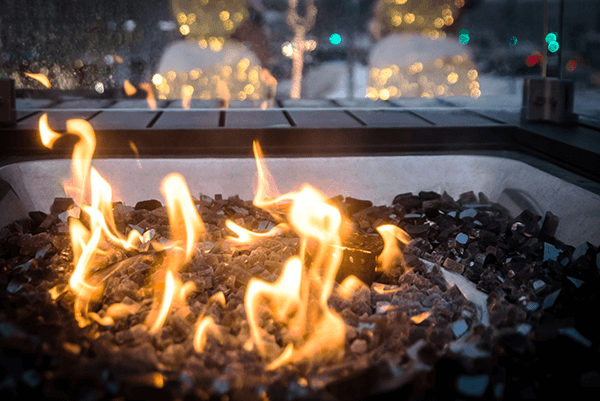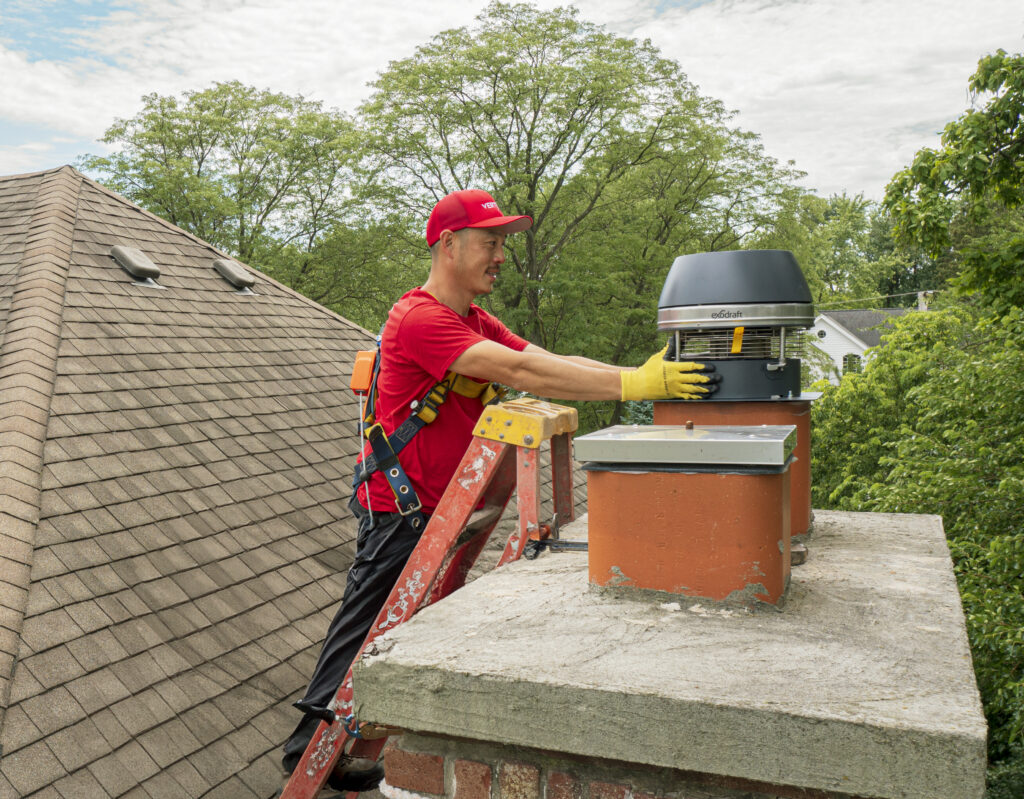
A damp chimney can start as an annoyance, but it can create many additional problems for you and your home. Recognizing what signs to look out for can help you stop these problems before they get worse. Knowing how moisture interacts with chimneys, and how to diagnose the source is incredibly important to every fireplace owner.
Fireplaces are a great thing to have during the colder months of the year. A fireplace can add character to even the most mundane rooms. Properly maintaining your fireplace and chimney is incredibly important.
When not taken care of a chimney can suffer from creosote build up, chimney fires and cracks in the foundation. These can lead to additional damage because of moisture making its way inside. This constant influx of moisture can lead to what many people call a damp chimney.
Signs of a Damp Chimney
Common symptoms of a damp chimney manifest on the inside. While blatant problems such as a collapsing stack can happen, usually you’ll see other smaller problems first. Many signs of a damp chimney look identical to a regular leak in the roof or wall. A damp chimney will have moisture situated only around the fireplace and chimney breast.
Rising marks along with yellow or brown stains on the walls are a good indicator that there's a leak. Additional damp patches and flaking paint might become more obvious during poor weather conditions such as rain.
These signs can often be seen on multiple levels that the chimney passes through including the attic. While these signs may seem fairly innocuous it can lead to considerable structural problems if left unfixed.
Moisture Damage
Water is capable of sliding through the smallest of cracks. It can seep into the foundation of even hardy materials and undermine them slowly. This isn’t more apparent than with brick and mortar chimneys. A crack can become exasperated as the moisture slowly rubs past it. The brick will begin eroding in much the same way as a rock in a river.
Often times the damage isn’t that obvious. Moisture that works its way into a brick edifice can expand during the winter. This expansion puts additional stress on the mortar causing more cracks. Once a chimney receives enough moisture, what binds it together can be destroyed causing a collapse.
Rain that works its way into a chimney can lead to something even worse. Water and built-up creosote in a flue can combine in a toxic way. This toxic substance is extremely acidic and can lead to additional cracks along the inside of the flue.
As mentioned before, one of the first signs of moisture damage is shown in the interior. Much of the same principles that apply to roof damage apply here as well - with mold and wall damage. If left long enough, this moisture damage can become a major safety concern that can only be resolved with construction.
Chimney Stack Faults
There are many reasons why a chimney can become damp. The most obvious cause is faults in the stack itself. Ventilation is a recurring problem. A blocked chimney is more prone to dampness than one that has good circulation. When the home heats up, this heat tries to escape by going upward.
The humidity then reaches some sort of blockage at the top, in the form of a cap or seal. Then all that humid warm air has nowhere to go but collect on the inside. In order to ensure proper circulation there should be a well circulating cap as well as a vent below the roof.

Sometimes cracks cause the moisture and not the other way around, meaning that a damp chimney might have an obvious diagnoses. A chimney pot, which is located on the top of the stack itself, is either capped or open-topped.
A capped pot with a crack in it can lead to moisture seeping in during rain. An open one will have no resistance against the rain. In the previous section we touched on how moisture can easily enter via cracks. If you're suffering from moisture in a chimney check to see how the brick work looks. Any obvious instances of cracks or misaligned bricks should be immediately fixed.
Building Failures
While the result of damp chimney is almost always a result of underlying problems with the structure itself, sometimes it can be a result of its interaction with the building. Older structures that have been subject of countless seasons may have become degraded to the point that they can’t resist moisture anymore.
With no obvious cracks, this is usually a result of the exterior of the structure becoming porous with time. Lead flashing can become mangled or eroded. This leads to additional moisture slipping between the roof of the house and the chimney itself.
Missing pieces of the roof, such as tiles that have been blown off during a storm, can also damage the chimney even if the missing tile is near it. Broken or blocked gutters can cause numerous roofing problems that can pass to your chimney. Overflowing water can bombard joints and exasperate any weak points in the chimney itself.
While less common in modern homes, dampness can come from inside the house or be a result of some interior malfunction. Older fireplace and chimneys, or a newer one installed by an amateur, often don’t have the proper damp-proof membranes installed. Other times the chimney itself and the surrounding structure have not been properly sealed and thus absorb moisture easily.
Fixing A Damp Chimney
It's recommended to get a professional eye to look at your chimney if you're experiencing a problem. The level of investigation will depend on multiple factors and can range from a quick check to removing entire parts of the chimney.
A chimney technician should be familiar with all the techniques necessary and have the tools on hand to fix the problem. Depending on the level of damage a chimney technician might need to apply additional mortar, seal joints, replace interior sections of the home, and work in conjunction with other professionals to fully diagnose and correct the problem.
Ready for a Chimney Inspection?
If you're spotting moisture build-up around your fireplace mantel and chimney in the form of brown or yellowing spots, then you probably have a damp chimney. A damp chimney can become much worse with time as water has a tendency to make minor problems into major ones and major ones into catastrophic ones in no time at all.
Fixing a damp chimney should be priority for all homeowners who think they are suffering from it as it can easily spiral out of control. Vertical Chimney Care has been serving the area for over 30 years. We have helped thousands of homeowners with their fireplace and chimney needs. Contact us today and see why so many people have trusted us with their fireplace and chimney projects.
